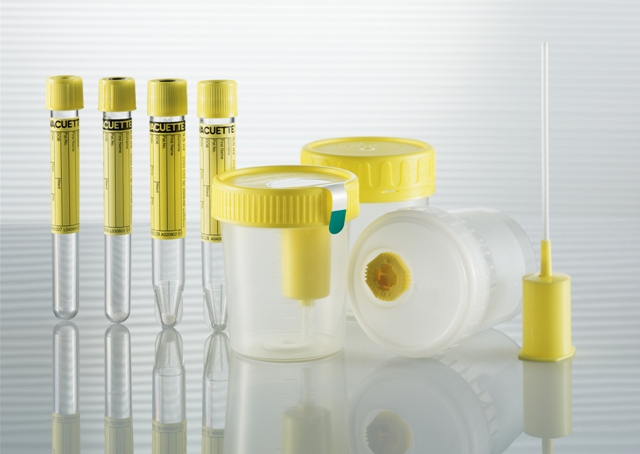
Doctors can learn a lot about patients from their urine,
Urine analysis help in detecting kidney diseases , diabetes , Bilharziasis , Ketosis , drug abuse, and many other disorders .
I – Preparing a Urine sample :
A- The most popular technique for getting some urine is the clean-catch method,
– The urethral opening is properly cleaned using swabs or pieces of cotton socked with betadine or benzalkonium hydrochloride , going in one direction from up to down and not the opposite .
– After the patient has cleansed the urethral opening , a small sterile container with a firm cap is used to collect the urine
– reject the 1st mls of urine and then start collecting it in the middle of the urination process .
Hint : the first urine voided is not collected because it will be contaminated with those microorganisms normally occurring in the lower portion of the urethra. Only the midstream portion is collected since it most likely will contain those microorganisms found in the urinary bladder.
B- Catheters are used In case of urinary retention , Three types of catheters are available :
– Hard catheter is used when the urethra is very narrow or has strictures.
– French catheter is a soft tube used to obtain a single specimen sample.
– Foley catheter is used If multiple urine samples are required over a prolonged period of time.
=================
II- Physical characters of Urine :
1- Volume :
Normal urine output is about 1-2 litters per day
less than one litter daily of urine is called oligouria ( < 1L ) ,
more than 2 litters is called Polyuria ( > 2L ) ,
Having No urine output at all is known as Anuria
abnormal volume of urine can help in identifying some pathological conditions ,
e.g : Polyuria could be a symptom of Diabetes mellitus , renal diabetes or chronic renal disease while oligouria is recorded in case of excessive sweating , vomiting and diarrhea .
>> Urine volume varies for a day to another according to many factors that should be taken in consideration while reading a Urine analysis report :

A – Temperature :
– in summer ( high temperature ) , the perspiration and sweating rates increase and so the urine volume is decreased ↓
– in winter ( low temperatures ) , the perspiration and sweating rates are decreased so most of the excess water is excreted mainly in urine ( ↑ urine volume )
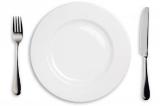 B – Diet :
B – Diet :
– food rich in protiens increases the excretion of urea , and since Urea is a solid will withdraw more water on it’s way out to dissolve in it to be excreted easily . ( ↑ urine volume )
– spicy food usually makes people drink more water , so more water is filtered through kidneys . ( ↑ urine volume )
-High fluid intake & Xanthene beverages ![]() – as coffee and Tea – increase urine volume too ↑
– as coffee and Tea – increase urine volume too ↑
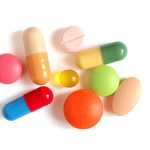 C – Drugs :
C – Drugs :
– Diuretics as Xanthine alkaloids increase the volume of urine
– Digitalis also increases the volume of urine , because it’s used in treatment of Congestive heart failure by increasing the Muscle tone of the heart and therefore enhances circulation and blood flow , so more blood passes through the kidneys and more water is filtered . ( ↑ urine volume )
– Anticholinergic drugs as Atropine decreases most of the body secretions including urine ( ↓ urine volume )
==========================
2 – Colour
Normal urine colour is pale to dark yellow , this yellow colour is due to the presence of 3 pigments in urine :
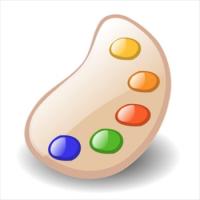
– Urobilin
– Urochrome
– Uroerythrin
———
Abnormal Urine Colours :

– Very faint pale yellow or colourless :
this is due to dilution of urine pigments with a large amount of water ( Polyuria ) , e.g : diabetes mellitus
–
—–
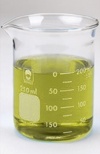
– yellowish green :
Due to excretion of bile in urine , e.g : Jaundice
—–
—-

– orange :
because of eating carrots or taking some drugs as Phenazopyridine ( urinary
antiseptic )
—–
——

– red :
appears on taking some medications as Rifampicin ( TB treatment ) , or due to presence of blood in urine , e.g : Bilharziasis
Hint : if the patient is a female it could be just menstrual blood .
———–
———–

– black :
most common reason is Alkaptonuria , which is a disorder in Tyrosine metabolism where homogenestic acid is accumulated and excreted in urine and upon oxidation it gives Urine that characteristic black colour .
====================================
………
3 – Odor :
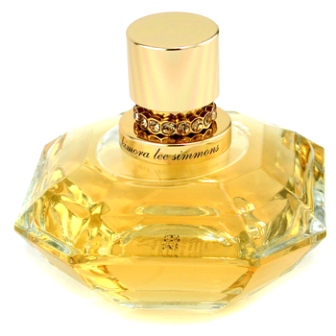
Fresh Normal urine has a faint aromatic odor due to presence of volatile organic acids .
After a while , Bacteria starts working on Urea found in urine using Urease enzyme , so the urea is broken down to carbon dioxide & ammonia ( CO2 + NH3 ) So the urine has ammonia odor .
abnormal odors of urine :
– Ripe apple like odor : due to presence of acetone in urine , e.g : ketosis , diabetes mellitus .
– Very bad odor : due to presence of Pus cells and epithelial cells in urine , e.g : Bilharziasis , renal inflammation , Pyuria .
=======================
4- Aspect :
Normal urine is Clear
turbid or cloudy urine indicates presence of Pus cells , crystals , epithelial cells or RBCs
Hint : Milky appearance in a male’s urine could be due to presence of sperms .
=========================
5- Sediment :
Fresh normal urine contains no sediment ,
if sediment is present it may be :
– Organized : as Pus cells or RBCs
– Unorganized : as Phosphate & Oxalate crystals ( examined under the microscope )
Hint : ” aspect ” deals with the consistency and appearance of the whole urine sample ,
while ” sediment ” means the deposited substances and periceptate that could be found in the bottom of the urine sample .
=====================================
6- Urine PH :
Fresh Normal urine is slightly acidic ( PH = 5.7 – 6.8 )
thats due to presence of Na & K salts of mono & Di basic phosphoric acid .
– after a while , as we said in the odor part , bacteria will work on urea generating ammoina which is basic in nature so the urine becomes alkaline .
abnormal Urine PH :
– acidic urine indicates respiratory or metabolic acidosis
– alkaline urine indicates respiratory or metabolic alkalosis
– Diet also affects the Urine PH and should be taken in consideration while reading a Urine analysis report ,
e.g : vegetables and fruits containing large amounts of sodium citrate makes the urine more alkaline , as the citrate enters Krebs cycle while Sodium (Na+) is excreted in urine as basic Sodium bicarbonate ( NaHCO3 ) .
Hints :
– respiratory acidosis means that the exhalation of CO2 is decreased ( Hypo-ventilation ) so instead of going out of the body, CO2 is transformed into Carbonic acid ( H2CO3 ) making Urine more acidic ,
in respiratory alkalosis , the opposite occurs … CO2 exhalation is much increased ( Hyper-ventilation ) and CO2 & carbonic acid levels become below normal , so the urine becomes more alkaline .
– metabolic acidosis means that there is a disorder in a certain metabolic pathway leading to abnormal increase of acidic products ,
while metabolic alkalosis is due to a disorder in a certain metabolic pathway leading to abnormal increase in basic products .
=====================
7- specific gravity :
– Normal urine specific gravity ranges between 1015 – 1025
– Higher specific gravity is due to excess solids in urine , e.g : Glucose in urine as diabetes mellitus , Urea in case of protein rich diet .
– Lower specific gravity indicates more fluild and less solids in urine , e.g : Diabetes insipidus ( deficiency of Anti diuretic hormone “ADH” ) leading to dilution of urine .
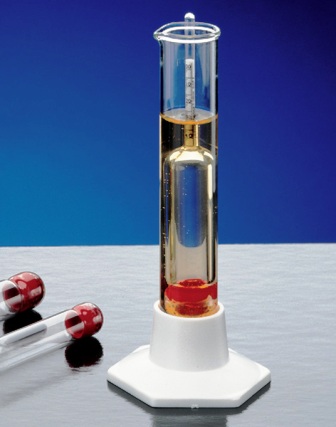
Hint :
specific gravity is measured by urinometer or lactometer , these instruments are commonly programmed on a temperature 20°C
each 3°C increase in temperature increases specific gravity by 1 unit
so , to get an acurrate reading when the urine temperature is not 20 , use the following equation :
Accurate reading = Instrument reading + [ ( T – 20 ) ÷ 3 ] , where T = urine temperature .
==============================
III – Abnormal Constituents in Urine :
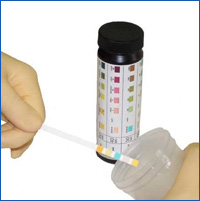
1- Albumin :
– indicates albuminuria , liver & kidney diseases and sometimes heart diseases also .
2- Glucose :
– indicates Glucosuria , Diabetes mellitus , excessive sweet in diet , renal diabetes .
3 – Blood :
– indicates Haematuria , Bilharziasis
4- Ketone bodies :
– Keonuria ,
– break down of fat to be used as a source of energy , leading to increased Acetyl CO A levels that is condensated into ketone bodies , e.g : Low Carbohydrate diet , starvation , excessive fat intake , Diabetes mellitus
Hint : most common ketone bodies are : acetone , acetoacetic acid & B-hydroxy butyric acid .
5- Bile salts & Bile pigments
– jaundice
6- Indican :
– indicates sever constipation , gastric cancer , gastritis or gastric obstruction .
these consituents and more are tested easily using special Urine test strips ,
here is a very good tutorial that explains it all 😉 :
part 1 :
===========
part 2 :
============
part 3 :
=========
Mmmm … using Yellow color a lot reminded me of something !
↓
↓
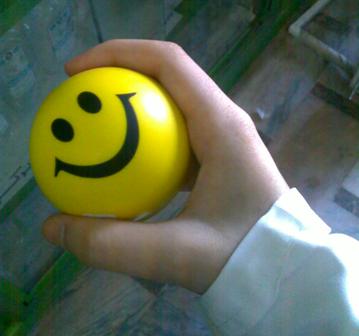
Say Hello to Mr. Happy , my favourite rubber ball of all the ones sold in our Pharmacy :happy:
we play together all the time when i’m working there 🙂
———-
References :
– Graff’s Textbook of Routine of Urinalysis and Body Fluids
http://www.ehow.com/how_4790922_urine-analysis.html

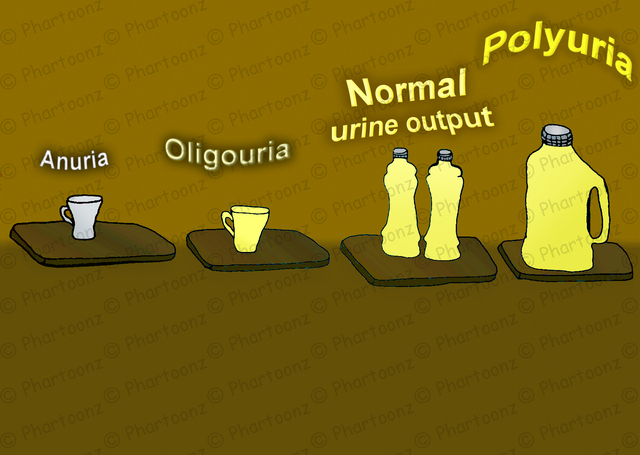
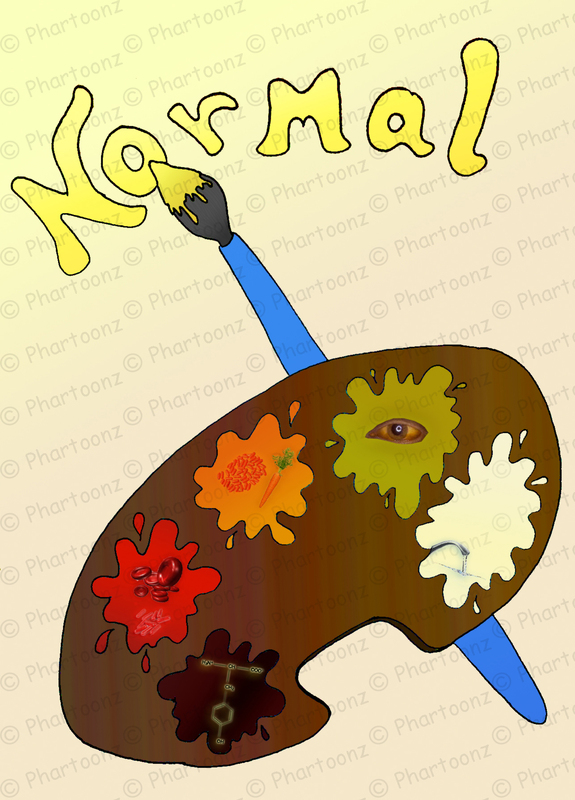
Thank you for helpful article.
Welcome 🙂
Great work 🙂
keep it up
Hello Mr.Happy :happy:
thanks 🙂
Hi there 🙂 Is it OK if I kinda off topic? I’m trying to read the website on my new Macbook but it doesn’t show properly, any solutions? Should I try to find an update for my software or something? Thanks! Tana x 🙂
i wish i could help but i dont know much about ” macbook ”
i hope that problem is fixed soon , welcome any time Tana 🙂
i didbt readthe topic till now but im sure it’s verywonderfull topic …… i had acopy of the topic on my pc for reading it as the net is aproblem ….thank u Bonbona :biggrin:
always Welcome .. thank you 🙂